Related Research Articles

The Easter Rising, also known as the Easter Rebellion, was an armed insurrection in Ireland during Easter Week in April 1916. The Rising was launched by Irish republicans against British rule in Ireland with the aim of establishing an independent Irish Republic while the United Kingdom was fighting the First World War. It was the most significant uprising in Ireland since the rebellion of 1798 and the first armed conflict of the Irish revolutionary period. Sixteen of the Rising's leaders were executed from May 1916. The nature of the executions, and subsequent political developments, ultimately contributed to an increase in popular support for Irish independence.
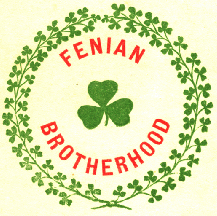
The Fenian Brotherhood was an Irish republican organisation founded in the United States in 1858 by John O'Mahony and Michael Doheny. It was a precursor to Clan na Gael, a sister organisation to the Irish Republican Brotherhood (IRB). Members were commonly known as "Fenians". O'Mahony, who was a Gaelic scholar, named his organisation after the Fianna, the legendary band of Irish warriors led by Fionn mac Cumhaill.
This article concerns the Gaelic nobility of Ireland from ancient to modern times. It only partly overlaps with Chiefs of the Name because it excludes Scotland and other discussion. It is one of three groups of Irish nobility, the others being those nobles descended from the Hiberno-Normans and those granted titles of nobility in the Peerage of Ireland.
The Irish Bulletin was the official gazette of the government of the Irish Republic. It was produced by the Department of Propaganda during the Irish War of Independence. and its offices were originally located at No. 6 Harcourt Street, Dublin. The paper's first editor was Desmond FitzGerald, until his arrest and replacement by Erskine Childers. The Bulletin appeared in weekly editions from 11 November 1919 to 11 July 1921.
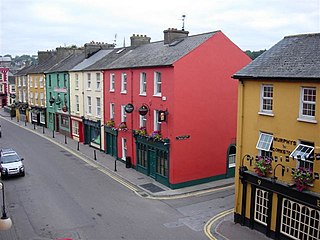
Bandon is a town in County Cork, Ireland. It lies on the River Bandon between two hills. The name in Irish means 'Bridge of the Bandon', a reference to the origin of the town as a crossing-point on the river. In 2004 Bandon celebrated its quatercentenary. The town, sometimes called the Gateway to West Cork, had a population of 6,957 at the 2016 census. Bandon is in the Cork South-West constituency, which has three seats.

Elizabeth Bowen CBE was an Irish - British novelist and short story writer notable for her books about the "big house" of Irish landed Protestants as well her fiction about life in wartime London.
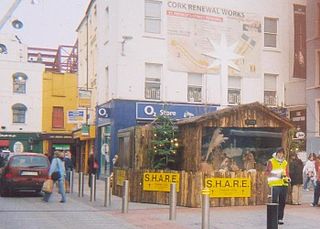
Presentation Brothers College is a Catholic, boys, private fee-paying secondary school in Cork, Ireland. Presentation Brothers College is currently ranked as the number one boys secondary school in Ireland and regularly places first in the annual top performing schools table rankings conducted by The Irish Times.
The British and Irish Communist Organisation (B&ICO) was a small group based in London, Belfast, Cork, and Dublin. Its leader was Brendan Clifford. The group produced a number of pamphlets and regular publications, including The Irish Communist and Workers Weekly in Belfast. Τhe group currently expresses itself through Athol Books with its premier publication being the Irish Political Review. The group also continues to publish Church & State, Irish Foreign Affairs, Labour Affairs and Problems.
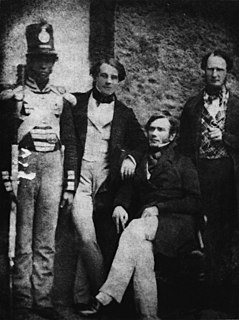
The Young Irelander Rebellion was a failed Irish nationalist uprising led by the Young Ireland movement, part of the wider Revolutions of 1848 that affected most of Europe. It took place on 29 July 1848 at Farranrory, a small settlement about 4.3 km north-northeast of the village of Ballingarry, South Tipperary. After being chased by a force of Young Irelanders and their supporters, an Irish Constabulary unit took refuge in a house and held those inside as hostages. A several-hour gunfight followed, but the rebels fled after a large group of police reinforcements arrived.

The Kilmichael Ambush was an ambush near the village of Kilmichael in County Cork on 28 November 1920 carried out by the Irish Republican Army (IRA) during the Irish War of Independence. Thirty-six local IRA volunteers commanded by Tom Barry killed sixteen members of the Royal Irish Constabulary's Auxiliary Division. The Kilmichael ambush was politically as well as militarily significant. It occurred one week after Bloody Sunday and marked an escalation in the IRA's campaign.
Daniel "Sandow" O'Donovan, was a leading member of the Irish Republican Army during the Irish War of Independence.
Peter Hart was a Canadian historian, specializing in modern Irish history.
The Dunmanway killings, also known as Bandon Valley Killings, the Dunmanway murders or the Dunmanway massacre, refers to the killing of fourteen males in and around Dunmanway, County Cork and Bandon Valley, between 26–28 April 1922. This happened in a period of truce after the end of the Irish War of Independence and before the outbreak of the Irish Civil War in June 1922. Of the fourteen dead and missing, thirteen Protestants including one Methodist and one was Roman Catholic, which has led to the killings being described as by some as sectarian but no evidence exists to prove this. Six were killed as purported British informers and loyalists, while four others were relatives killed in the absence of the target. Three other men were kidnapped and executed in Bandon as revenge for the killing of an IRA officer Michael O'Neill during an armed raid. One man was shot and survived his injuries.
The killings at Coolacrease was an incident that took place in County Offaly during the Irish War of Independence. In late June 1921, Irish Republican Army (IRA) volunteers came under fire at a roadblock in the rural area of Coolacrease. The roadblock was located at the boundary of land owned by loyalist farmer William Pearson. On 30 June, his sons Richard and Abraham Pearson were shot by an IRA firing squad and their house was burnt.
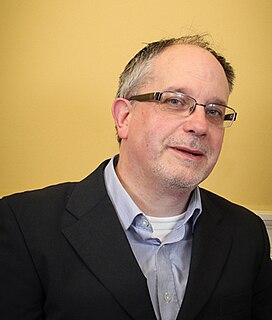
Mick Barry is an Irish People Before Profit/Solidarity politician who has been a Teachta Dála (TD) for the Cork North-Central constituency since the 2016 general election.
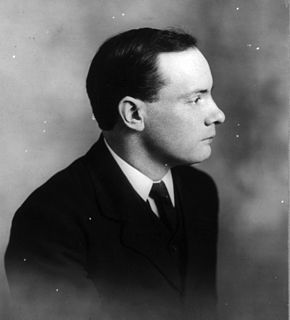
Patrick Henry Pearse was an Irish teacher, barrister, poet, writer, nationalist, republican political activist and revolutionary who was one of the leaders of the Easter Rising in 1916. Following his execution along with fifteen others, Pearse came to be seen by many as the embodiment of the rebellion.
Thomas MacNevin was an influential Irish writer and journalist, who died under "peculiarly sad circumstances" in a Bristol asylum. According to T. F. O'Sullivan, he was one of the most "brilliant intellects" to be associated with The Nation newspaper and with the Young Ireland movement.
Brendan Clifford is an Irish historian and political activist.
The Irish Political Review is a monthly Irish magazine dedicated to Irish politics and history. It is known for its criticisms of historians associated with the "revisionist" view of Irish history, especially Peter Hart and Roy Foster.
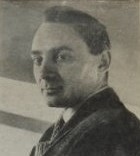
Eoin Neeson was an Irish journalist, historian, novelist and playwright.
References
- Regan, J. M. (25 January 2012). "The 'Bandon Valley Massacre' as a historical problem" (PDF). History. 97 (325): 70–98, esp p.77. doi:10.1111/j.1468-229X.2011.00542.x . Retrieved 2 February 2017.[ dead link ]
Citations
- ↑ "BICO Is Dead—Long Live BICO!" by Jack Lane, A Review of What? Irish Political Review, Jan. 2009, pp. 36–37 Archived 4 March 2016 at the Wayback Machine .
- ↑ An Phoblacht "Hart Trouble Diagnosed" Archived 3 March 2016 at the Wayback Machine Review of the AHS' book Troubled History,which is critical of Hart
- ↑ For the AHS' criticism of Bowen, see "The Dubliner:The Life Times & Works of James Clarence Mangan", Clifford 1988, "A North Cork Anthology" by Jack Lane, 1993, and "Notes on Eire" by Clifford & Lane 2008.
- ↑ See, for instance, Myths From Easter 1916 by Eoin Neeson (AHS, 2007), and About Behaving Normally in Abnormal Circumstances by Desmond Fennell (Athol Books, 2007).
- 1 2 Coolacrease: The True Story of the Pearson Executions edited by Philip O'Connor, AHS, 2008.
- ↑ Coolacrease Book has Numerous Axes to Grind Archived 22 April 2009 at the Wayback Machine , Sunday Business Post. "Dublin Review of Books | Getting Them Out - Southern Loyalists in the War of Independence - Tom Wall". Archived from the original on 5 October 2011. Retrieved 13 April 2009. Spring 2009. Dublin Review of Books published a response by two of the book's authors in Autumn 2009. Archived 1 August 2012 at archive.today
- ↑ See, for instance, Jeffrey Dudgeon, "He Could Tell You Things", Dublin Review of Books, "> He Could Tell You Things". Archived from the original on 3 March 2009. Retrieved 27 February 2009. and W.J McCormack's article "Harnessing the Fire" in Books Ireland, Dec. 2004, both critical of the AHS' position on the Casement Diaries.
- ↑ Anthony Coughlan reviews the AHS' book James Connolly Re-Assessed. Archived 4 October 2012 at the Wayback Machine Irish Democrat